Travel Tips
Going to India for the First Time? You Need to Know These 10 Things
- /home/discountdealsonh/public_html/wp-content/plugins/mvp-social-buttons/mvp-social-buttons.php on line 27
https://www.discountdealsonhotels.com/wp-content/uploads/2017/08/how-to-india-temple.jpg&description=Going to India for the First Time? You Need to Know These 10 Things', 'pinterestShare', 'width=750,height=350'); return false;" title="Pin This Post">
- Share
- Tweet /home/discountdealsonh/public_html/wp-content/plugins/mvp-social-buttons/mvp-social-buttons.php on line 69
https://www.discountdealsonhotels.com/wp-content/uploads/2017/08/how-to-india-temple.jpg&description=Going to India for the First Time? You Need to Know These 10 Things', 'pinterestShare', 'width=750,height=350'); return false;" title="Pin This Post">


Pack Light (Especially When You’re Sightseeing)
India is a country with many climates, but it’s mostly hot. Pack breezy, loose clothing that covers your arms and legs, especially for days you plan to visit temples or other religious sites. If you are even remotely interested in shopping, leave half of your suitcase empty. One visit to a market will have you wishing you brought another suitcase just to take home spices, textiles, clothing, and home decor.
When you’re out sightseeing, wear sunscreen and a brimmed hat and pack only your camera, phone, wallet, passport, and a small bottle of water. Even regular items like cosmetics, cigarettes, food, and pens are considered contraband at most tourist sights and if you bring them, you’ll have to throw them out. If you carry a bag, you’ll have to wait in a long line to have it scanned and searched. Security is taken seriously here.

Make Sure Your Passport Is in Order (and Bring It Everywhere)
Applying for an Electronic Tourist Visa is easy. Visitors to India need at least two empty pages in their passport and passports need to be valid for at least six months from the date of arrival. Double check before you leave, or you might be turned around at customs and sent back to the U.S. Almost every major tourist attraction requires you to show your passport to enter, so don’t leave it in the hotel safe.

Getting Around Can Be Tricky
Most visitors to India will want to see more than just the city they fly into. Yes, Mumbai and Delhi both make a great introduction to the country, but there’s so much more to see. Train travel can be romantic, but be prepared for a chaotic scene at the train station. Traffic within cities can be extreme during rush hour, and it can sometimes take hours to get from one end of the city to the other. Domestic flights within India are easy and inexpensive and the best way to travel if you want to pack as many destinations as possible into your trip. Just like in the U.S., airport security can be hectic, especially at larger airports. There are different lines for men and women, since men are put through a metal detector and women (regardless of what you’re wearing) are taken into a curtained booth for a pat down. Just make sure to arrive early and go with the flow. Always try to arrange airport transfers in advance through your hotel, especially on your first night in India.
Insider Tip: If the idea of getting around India is daunting, don’t try to do it all on your own. Luxury travel companies like Abercrombie and Kent offer group trips with set itineraries or custom itineraries for more creative travel. They’ll take care of all airport transfers and boarding passes, so you can focus on exploring a new country.

Yes, the Pollution, Traffic, and Overpopulation Are Bad
But it’s not any worse than New York or L.A. Try to avoid Delhi between November and February when smog levels are dangerously high. Once you’re off the beaten tourist track in places like the Himalayas, you’ll find a calm, clean, and peaceful side of India.

The Food Is So Good You’ll Never Be Able to Enjoy Your Local Indian Restaurant Again
Discovering the flavors of India is a bit like bringing your taste buds into the fourth dimension. You think you’ve had curry before, but you’ve never had curry like this. Each of India’s 29 states has multiple cuisines and complex flavors with ingredients that don’t even exist in America. In the north, you’ll find rich meaty stews, and in the south, you’ll find spicy vegetarian curries.
While there are some ingredients and flavors that are a signature in dishes across the country, the spices and cooking methods vary from region to region. Dishes you think you’ve had before (and many you’ve never even heard of) will be totally unrecognizable (in a good way) from their bland American counterparts. After a week or two of spicy Kerala fish stew and rich saag paneer, you won’t be able to enjoy Indian food back home.

Speaking of Food, You Will Probably Get Sick
But it’s avoidable. Almost every Western traveler to India experiences some kind of digestion discomfort (colloquially known as “Delhi Belly”) ranging from mild diarrhea to the kind of sick where it’s coming out of both ends and you need medical attention. Before your trip, head to your local health food store to stock up on Grapefruit Seed Extract (GSE) and other immune-boosting vitamins. Once you’re in India, hold fast to the “peel it, cook it, or leave it” rule when it comes to fresh fruit and vegetables (except in 5-star hotels) and don’t drink any coffee or tea at local shops.
Shopkeepers and locals will inevitably invite you for a cup of tea or a meal, but just politely decline. All meals should be eaten at restaurants and hotels, but if you’re a serious street food fanatic, stick to fried foods cooked in boiling hot oil right before your eyes. And maybe save any reckless eating for the end of your trip so you can be sick on the plane home instead of missing a day or two of sightseeing. It’s a good idea to pack charcoal, Immodium, and possibly even a Cipro prescription just in case things get really serious.
Insider Tip: Contrary to popular belief, real toilets are easy to find. Yes, the squat-over-a-hole-in-the-ground toilets are prevalent, but most public restrooms in airports, rest stops, restaurants, and tourist attractions will have both options.
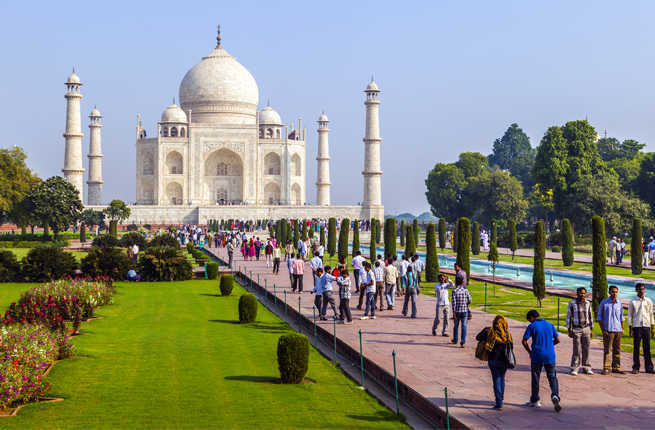
Don’t Feel Like You Have to Visit the Taj Mahal
It’s hard to get to, it’s in a less-than-charming town, and it’s crowded. Not to mention that tickets are tricky to purchase and hotels are at a premium. If this isn’t at the top of your bucket list, feel free to skip it on your first trip to India. If it is at the top of your bucket list, you can visit the Taj in one very long and exhausting day trip from Delhi, or you can spend the night in Agra for a chance to visit at sunrise and sunset.

Luxury Here Is Worth Every Penny
If you can afford it, India offers some of the world’s best luxury travel experiences. However, you don’t have to be royalty to travel well. A basic (but luxurious) room in a 5-star hotel in a city (like the Oberoi Mumbai) costs under $200 in some cases. Iconic palace resorts like the Oberoi Rajvilas and Taj Lake Palace are a bit more expensive, but the setting, service, and food are unparalleled anywhere else on earth. In Agra, the Oberoi Amarvilas is a comfortable oasis after a hectic day touring the Taj Mahal. If you’re mixing high-end hotels with low- to mid-range hotels, make sure to save the luxe places for the end of your stay (and splurge for a spa treatment too).
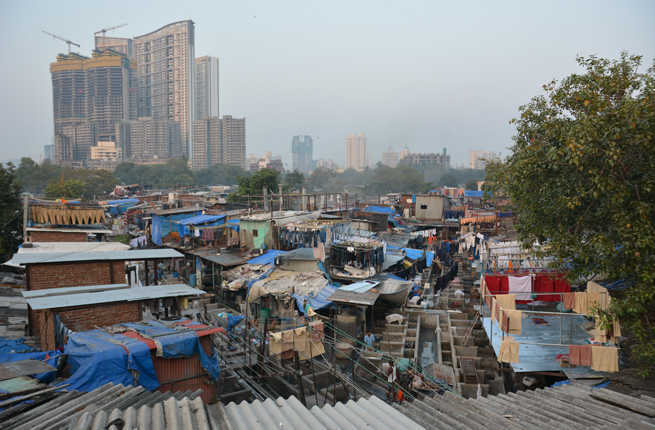
But You Will Be Faced With Abject Poverty
Visiting India can be heartbreaking. In cities and tourist sites, you’ll see people (even young children) asking for money. If you do decide to give, be discreet about it. If not, be polite but firm, otherwise you may feel harassed. If you’d like to help, seek out an established charity to donate to or consider helping out with service-oriented travel for part of your trip.

Don’t Be Intimidated
If it’s your first time, don’t try to see everything. India is like nowhere else on earth and with a little bit of planning and flexibility, you’ll be able to plan a fantastic trip.
PLAN YOUR TRIP with Fodor’s India Guide
Travel Tips
The Luxurious Way to Experience Tokyo’s Cherry Blossom Season
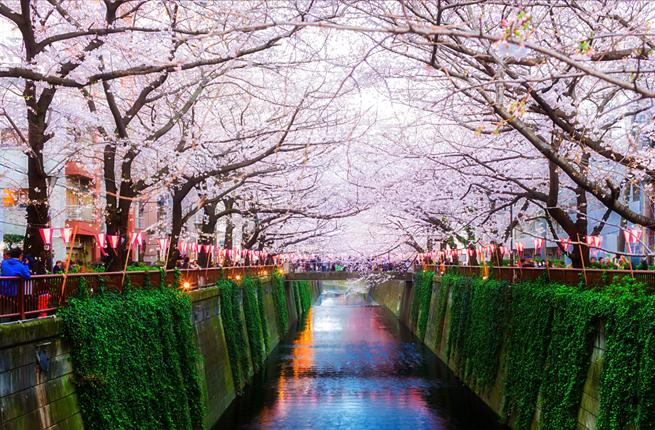
Palace Hotel Tokyo’s Blossoming Tokyo package immerses guests in the beautiful cherry blossoms that bloom throughout the city during the spring months. Over the course of a three-hour tour, guests will be chauffeured to Tokyo’s most scenic sakura-spotting locales in a luxury car.
Interested in taking your Instagram to the next level? The hotel’s concierge can, at an additional charge, arrange for a professional to photograph guests among the blossoms. No filters necessary!
The package (which features additional add-ons such as a workshop on mochi making, a lesson on the art of flower arranging, as well as a seasonal bento box lunch tasting) is available from March 1 through May 31.
To learn more about the Blossoming Tokyo package visit Palace Hotel Tokyo.
PLAN YOUR VISIT with the Tokyo Travel Guide.
Travel Tips
Today Is National Plan for Vacation Day!
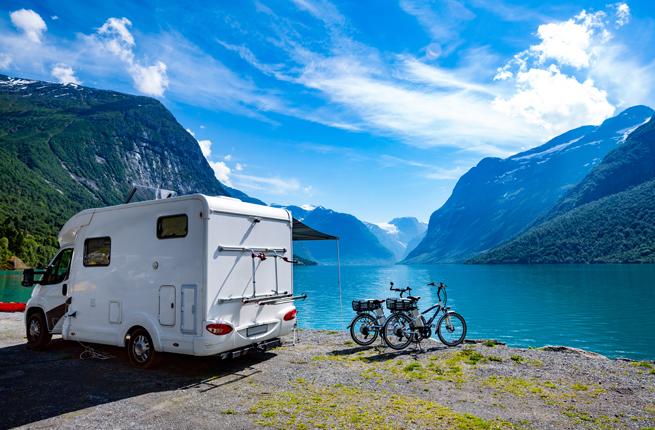
Today marks the first-ever “National Plan for Vacation Day,” created by the organization Project: Time Off, which estimates that 55 percent of employees in America do not use all of their allotted vacation days.
In fact, Americans skipped out on 658 million days in 2015, many of which couldn’t be recouped the next year because they didn’t roll over. What’s the reasoning behind the overzealous work ethic?
For one, employees are glued to their computers and phones, available at all times, and able to work anywhere that has Wi-Fi. We also have fears associated with taking time off: work will pile up while we’re away, or employers will see us as replaceable.
And some of us are bad at planning—by the time we get around to thinking about vacation, our calendar has already filled up for the year. Making time is worth it, though; as it turns out, vacations are actually quite good for employees and have benefits similar to meditation. Many employees found their own concentration had improved and were able to get more done after returning from vacation.
It’s still early days for 2017, so Project: Time Off is urging employees to work out a schedule today, so you can make sure that PTO doesn’t go to waste, even if it means having a conversation with your boss.
Now, the fun part: where should you go with your pent-up wanderlust? Our staff recommends places like Bordeaux, Cape Town, and Kiev, (but maybe skip Dubai and Times Square).
Travel Tips
Test Drive Google’s Totally Amazing Arts and Culture App
Picture yourself standing within inches of Chagall’s magnificent ceiling at the Paris Opéra, examining every last detailed brushstroke of the surrealist masterpiece. Or strolling through the back streets of Paris in the company of urban explorer and photographer David de Rueda. This is the stuff art dreams are made of, experiences that only the luckiest of art aficionados may have the chance to enjoy—if they’re really, really lucky.
But thanks to a new Google online platform, you don’t even need to leave your home to relish in some of the world’s most amazing art. Since not everyone has the time or money to travel the world appreciating global culture or the connections to access such masterpieces, the Google Cultural Institute has partnered with more than 1,100 institutions, making available more than 400,000 artworks and 5 million photos, videos, manuscripts and other documents online, to everyone, for free. And not just make available, but curated with virtual tours, online exhibitions, a searchable database, and a bounty of other ways to experience the world’s foremost cultural treasures. It’s a platform called Google Arts & Culture, available via website and app.
Admittedly, the site is a little confusing to navigate. The best thing to do is just play and see what you discover. You will be rewarded wherever you end up. The homepage changes daily with different features, while the hamburger menu provides navigation to artists, art movements, partner institutions, and the like.
Here’s a primer on the absolutely-do-not-miss highlights.
Explore a Database of Artworks

You can sort through thousands of masterpieces from thousands of museums in more than 70 different countries. Use the search tool to search for anything: shoes, all things silver, Egyptian cats, Bordeaux, whatever you choose. You also can search by artist, medium, art movement, museum (search by partner), even object. Or scroll through an artist’s repertoire by time period (for example, see Rembrandt’s evolution as an artist, one painting at a time, here) or color (see here).
Zoom in to See Masterpiece Secrets
Google has devised advanced technology to hone into the extraordinary detail of images, paintings, artifacts and more, far beyond what you can see with the naked eye. One of the most amazing stories concerns Paris Opéra’s ceiling by Marc Chagall. Chagall’s son, David McNeil, had always heard that his father had painted a picture of him as a baby but he never knew where it was – until they found it embedded in the Paris Opéra ceiling, near the Stravinsky panel, during this Google project. Take a peek here.
Take a Virtual Tour

Get up close and personal to hundreds of art institutions and cultural icons—the Statue of Liberty, Sagrada Familia, Fenway Park—where you can drag your finger around the image and tap to move through an exhibit or location in a museum-themed version of Google Street View. It’s like you’re personally visiting the site, studying what’s on the walls, on the floor, in the next room, whatever interests you, without actually being there. And it’s not just big museums here–check out, for example, the Wyeth-Tootle Mansion in St. Joseph, Missouri. Some also require the use of a virtual reality viewer to enhance the experience (such as Google Cardboard; the website shows you how to make your own; see here).
See Secret Spaces in 360
Join urban explorer and photographer David de Rueda in an exploration of Paris’ secret side in a feature called Curio-Cité, best seen on your mobile phone with a virtual reality viewer and headphones. This is just the first of many such explorations to be created.
Get Good Old-Fashioned Museum Info

Should you be planning to physically visit a museum, you can check opening hours, its location on a map, and daily events.
Enjoy an Interactive Online Exhibit
Google offers a series of different online exhibits in which you can delve into archival materials, objects, and stories typically not available to the typical museum visitor. There are straightforward museum visits as well as curated exhibits centering on various themes. The American Democracy collection, for example, brings together more than 70 exhibits and 2,500 artifacts from 44 institutions dedicated to the preservation of U.S. political history and American democracy. Take a peek here. That said, the behind-the-scenes tour of London’s Natural History tank room, curated by Oliver Crimmen, the museum’s Senior Curator of Fish, has to be one of the more unusual tours you’ll find. Among the things he’ll show you are specimens collected by Charles Darwin during his voyage aboard the H.M.S. Beagle.
Read Fascinating New Stories About Art Every Day
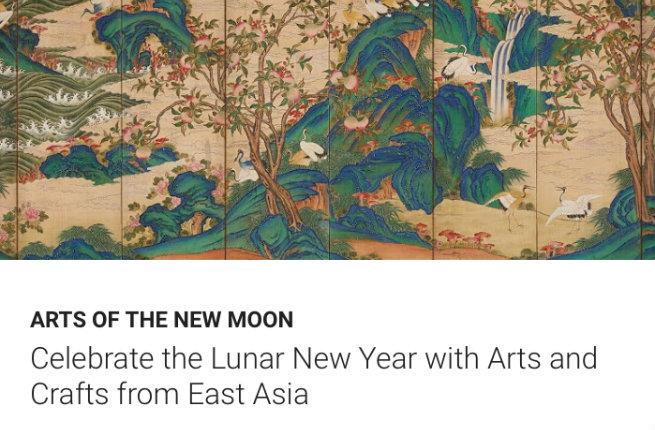
Google experts post featured new stories every day, offering insight (and photos) into different angles of art and culture. Recent ones include: “Weird Histories: The Peacock Room,” exploring the history of Whistler’s beautiful London dining room, currently at home in Washington’s Freer Gallery; ”Virtual Herbal Garden,” taking you to the Hong Kong Museum of Medical Sciences; and “Black and British: A Forgotten History,” a four-part series delving into Britain’s slave narrative. As you will see, these are not light and fluffy fillers!
Enhance a Personal Visit
If you find yourself taking a physical tour of a museum, check out a new feature that several museums are offering through Google Arts & Culture. With Art Recognizer, you point your phone at a painting to access a bounty of info about it. For now, this is available only at Washington, D.C.’s National Gallery of Art, Sydney’s Art Gallery of New South Wales, and London’s Dulwich Picture Gallery. But Google is planning to roll this out in museums around the world, so stay tuned.
There’s Much, Much More
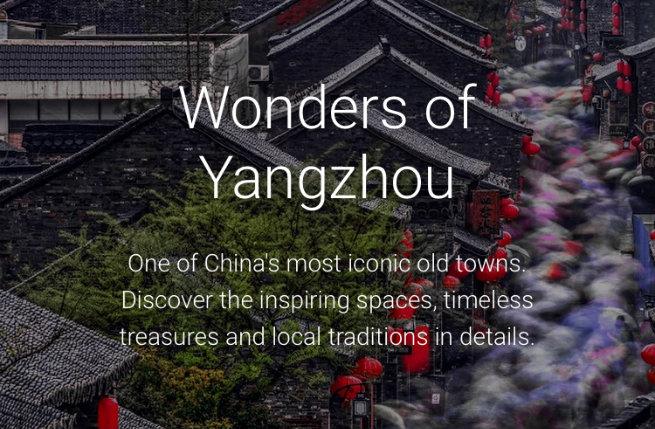
Just play around with the website and you’ll come across all kinds of fascinating offerings. The folks at Google are constantly innovating–there’s even a page that shows their experiments at the crossroads of art and technology. You can bet this site will continue to be massaged and improved upon and enlarged. Stay tuned!
-

 France6 years ago
France6 years agoHotel Maison Montgrand – Vieux Port
-

 United Kingdom6 years ago
United Kingdom6 years agoBritannia International Hotel Canary Wharf
-

 France6 years ago
France6 years agoAppart’City Marseille Euromed
-

 France6 years ago
France6 years agoEscale Oceania Marseille Vieux Port
-

 USA6 years ago
USA6 years agoThe Belvedere
-

 United Kingdom6 years ago
United Kingdom6 years agoBest Western London Peckham Hotel
-

 France6 years ago
France6 years agoAdonis Marseille Vieux Port
-

 United Kingdom6 years ago
United Kingdom6 years agoThe Z Hotel Soho















